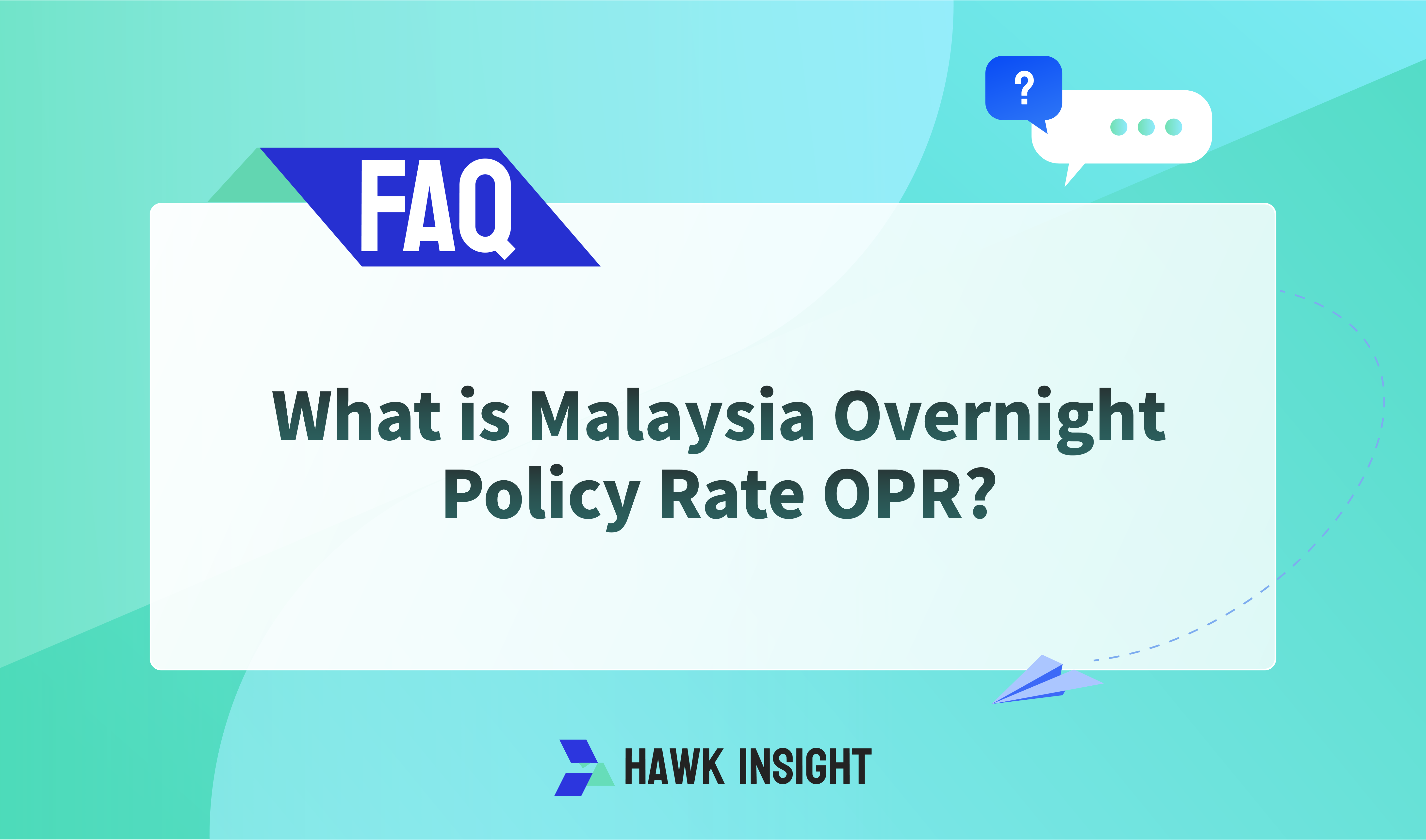What is Malaysia Overnight Policy Rate OPR?
The overnight policy rate is the interest rate that the BNM determines the major commercial banks in the country will pay when they lend to each other.

The announcement by Bank Negara Malaysia (BNM) on 24 January 2024 to maintain the Overnight Policy Rate (OPR) at 3% has wide and far-reaching implications for the economy and the investment sector.
As an important instrument of monetary policy in Malaysia, the adjustment of the OPR not only affects the cost of interbank borrowing, but also has a direct bearing on the liquidity of the economy as a whole and the performance of the investment market.
Background of OPR Adjustments
The adjustment of the Overnight Policy Rate is overseen by the Central Bank of Malaysia (BNM), taking into account the current and future economic environment, including factors such as the Consumer Price Index (CPI) and the trend of the Malaysian Ringgit exchange rate. Depending on changes in the economic cycle, BNM decides whether to adjust the OPR accordingly. For instance, during economic slowdowns, BNM might lower the OPR to stimulate economic activity, while in times of increasing inflationary pressure, it might raise the OPR to curb inflation.
On May 11, 2022, BNM announced a 25 basis points increase in the OPR. This decision was based on factors such as economic recovery, rising commodity prices, disruptions in the supply chain, and increased demand. Additionally, expectations of interest rate hikes by the Federal Reserve (FED) also influenced the adjustment of the OPR, leading to a weakening of the Malaysian Ringgit exchange rate and consequently affecting the domestic economy.
Impact on Malaysian Stock Market
The adjustments to the OPR significantly impact the Malaysian stock market (KLCI). Typically, a decrease in the OPR tends to drive the stock market upwards because in a low-interest-rate environment, deposit rates decrease, prompting investors to divert funds into the stock market in search of higher returns. Simultaneously, lower borrowing costs facilitate listed companies in expanding their operations and improving profitability.
Conversely, an increase in the OPR may exert pressure on the stock market. Higher borrowing costs can dampen the willingness of companies to expand and investors' risk appetite. For example, following BNM's announcement of a 25 basis points increase in the OPR on May 11, 2022, the KLCI experienced a decline. This was due to investors' concerns that higher borrowing costs could weaken corporate profitability and reduce market liquidity.
However, bank stocks typically perform better in an environment of OPR increases. Banks are able to increase their revenues through higher lending rates and net interest margins may still improve despite deposit rates also rising. Investors can focus on banks that have a higher proportion of floating loans, such as Malayan Banking Berhad and Public Bank, which are more likely to benefit from an OPR hike.
Impact of OPR Adjustments on the Malaysian Economy and Individuals
The adjustments to the OPR not only affect the stock market but also have broad impacts on the overall economy and individuals' lives. With an increase in the OPR, banks' loan rates also rise, leading to increased borrowing costs for businesses and individuals, potentially resulting in reduced consumption and investment. For instance, businesses face higher financing costs when expanding operations, while individuals encounter higher repayment pressures when purchasing homes or cars due to the rise in loan rates.
For individual savings, an OPR increase implies higher deposit rates, allowing depositors to earn higher interest returns. For example, following BNM's OPR increase on May 11, 2022, Malayan Banking Berhad and Public Bank Berhad raised their fixed deposit rates by 25 basis points each, to 1.75% and 1.95%, respectively. This is positive news for depositors as it increases their deposit returns.
Additionally, OPR adjustments have significant effects on the Malaysian Ringgit exchange rate. A decrease in the OPR increases the supply of Malaysian Ringgit in the market, potentially leading to depreciation. Conversely, an increase in the OPR helps support the Malaysian Ringgit exchange rate by attracting international capital inflows. However, if the Federal Reserve increases interest rates at a faster pace while BNM maintains the OPR, the Malaysian Ringgit may still face depreciation pressure. This is because investors may divert funds to higher interest rate US dollar assets, weakening demand for the Malaysian Ringgit.
Disclaimer: The views in this article are from the original Creator and do not represent the views or position of Hawk Insight. The content of the article is for reference, communication and learning only, and does not constitute investment advice. If it involves copyright issues, please contact us for deletion.